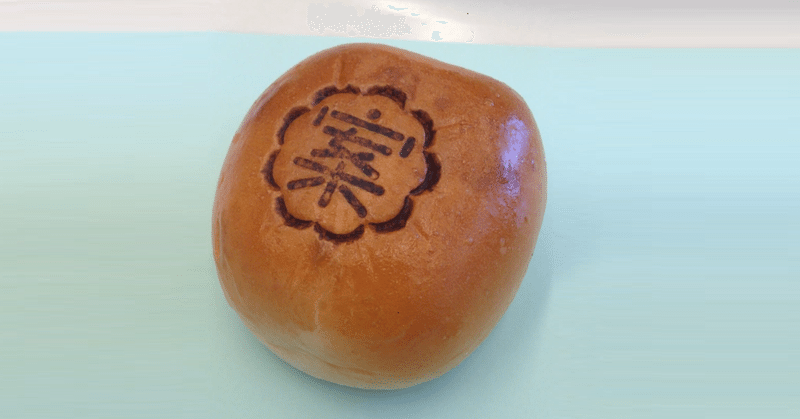
案パン食べてアイデアを出そう
以前働いていた会社の食堂に「案パン」という名前のあんぱんが売ってありました。その名の通り、アイデア出しに困ったら案パンを食べて考えていました。
一人で考えているとアイデアに行き詰ったり、考えが偏ってしまうことがありませんか?そんな時のために、アイデア出しの手法をまとめました。新規プロジェクトや新規事業、課題解決などでも活用できます。
もし、分からないところや記載内容で間違っている部分ががありましたらお気軽にお知らせください。
アイデア出しの前に大事なこと
体調
アイデアを出す前に脳が疲れ切っていると良いアイデアはでてきません。ゆっくり休養し、ブドウ糖を取って脳疲労の回復をしましょう。あと血流を良くすることで副交感神経が優位に働くので良いアイデアが生まれやすくなります。
相手の意見を否定しない
アイデア出しで大事なことは、どんな意見でも否定しないこと。まずはアイデアを出してみよう。恥ずかしいとか、良いとか、悪いとか、批評は行わないこと。酷いアイデアだったとしても誰かにとって最高の解決策になったり、他のアイデアと掛け合わさると化ける可能性があります。
相槌をうつ(リアクション)
誰かがアイデアを発表したらそれに対して相槌やリアクション(いいね、そうだね、なるほど、そういう考えもあるんだね)をしましょう。自分が発表した際に反応があると誰しも嬉しくなります。すると次のアイデアが生まれやすい雰囲気になり、場の空気が明るく良くなります。
記録を残す
アイデアを出したら写真に撮って置いたり、データに残しておく。あとで振り返った時にアイデアの軌跡(あしあと)になり、振り返りができます。
アイデア出しの手法をいくつかご紹介します。
① 6W2H
私はロクダブルニエイチと呼んでいます。シックスダブルツーエイチ呼びでも大丈夫です。テーマに対して誰が?いつ?誰に?何を?というようにアイデアを書いて広げていきます。

【使い方】
・用紙に四角を書き9分割し、9マスを作ります。
・マスの中央(左上から右に数えて5番目のマス)にテーマを書きます。
・次の1~9までをマスに書いて埋めていきます。
Who:誰が(誰がやるのか?例:私たち)
Whom:誰に(誰に向けてのものか?例:具体的なお客さんのイメージ)
What:何を(どんなことをしたい?例:〇〇をやってハッピーにしたい、など)
How:どのように(どういう方法や手法で実行する?例:△△を行うことでハッピーになる)
マスの中央にを書く(プロジェクトのテーマを大きく書く)
Why:それはなぜ(このプロジェクトをやる理由、これをやりたい動機など)
When:いつ(プロジェクト完成、リリース日など)
Where:どこで(実施する場所)
How much:いくらで(予算や販売額)
② ブレインライティング(みんなでもくもく案出し)
ブレインライティングはシートにもくもくと案を書いて皆と共有していきます。ちなみにブレインライティングと真逆なブレインストーミング(略ブレスト)では色んな人と話しながら次々と意見を交換していきます。

ブレインライティングは、次のようなルールでシートに書いてアイデアを回して出していきます。
ルールと実施内容
・少人数のグループを作る
・共通のテーマを決める
・時間を決めて実施(例:1行(3マス分)60秒×5行実施)
・基本文字ベースで、慣れて来たらイラストと文字で説明してみましょう
一人目は、シートの1行目に案を書く
次の人(例:左隣の人)にシートを渡し、右隣の人からシートをもらう
2行目にアイデアを書く(※例:1行目よりアイデアを少し発展させてみて書く、でも無理に発展させなくても大丈夫!)
書いたら次の人にシートを渡す
この流れをすべての行が終わるまで繰り返す
途中の案や最終行(例:5行目)の案で採用できるアイデアはあるか振り返る
※場合によっては出来上がったマスをカットしシャッフルしてアイデアを組み変えることもできます
③ マンダラチャート(マンダラート)とマインドマップ
・マンダラチャート
(メジャーリーガーの大谷選手もやっていた方法)
9×9の81マスで構成される目標達成の手法です。9つのマスの中央に目標やテーマを書いて、「関連する単語」や「課題」を残りの8マスに埋めていく方法。目標に対しどうしたらいいのかを見つける手法です。

(参考)以下のリンク先では、大谷選手が17才の頃に書いたマンダラチャートの画像が紹介されています。ちなみに、大谷選手は高校生の間にこのようなチャートを16枚書いたそうです。

・マインドマップ
もしかしたらマインドマップが一番皆さんがやったことがある、見たことがある手法かもしれません。
ポイント
・用紙の中央から書きはじめる
・抽象的なアイデアから具体化する(テーマを中央に書いてもOK)
・どんどんアイデアを追加して細分化する(具体的に書いていく)
・イラストや色を変えて書いていってOK
※マンダラチャートのようにマスの制限がないため、無限に書いていくことができる。

④アンチプロブレム(真逆の意見を出す)
テーマを決めてアイデアを出し、真逆の意見を出す方法です。イメージが難しいかと思いますので例題を作りました。
(例)
アンチプロブレム手法を用いて「美味しい朝食を食べるには」を考えるには、まずその反対の状況、「美味しくない朝食を食べる状況」を想像します。ここから、何が美味しくない朝食を生むのか、その要因を逆に考えることで、美味しい朝食へのヒントが見えてきます。

原材料の質: 美味しくない朝食は、新鮮でない、または低品質の食材から作られることが多いです。逆に言えば、新鮮で高品質の食材を選ぶことが美味しい朝食への一歩です。
調理方法: 不適切な調理方法や急いで作ることで、食事が美味しくなくなることがあります。美味しい朝食には、適切な調理技術や十分な調理時間を確保することが重要です。
味付け: 過度または不足した調味は、朝食の味を損ねます。バランスの取れた味付けを心掛けることで、美味しさを引き出せます。
食事のバランス: 栄養が偏っていると、体が求める満足感が得られません。バランスの良い食事を計画することが、美味しさと満足感をもたらします。
環境と気分: 雑念が多い環境や悪い気分は、食事の味を損ねます。快適な環境と良い気分で食事をすることが、美味しく感じる一因となります。
これらの「美味しくない」要因を反転させて実践することで、「美味しい朝食を食べる」ためのアプローチが見えてくるはずです。美味しい朝食を追求する際には、品質の良い食材の選択、適切な調理法、バランスの取れたメニュー、そして楽しむ心持ちが重要となります。
最後に
昔、私はとあるアイデアソン(テーマに沿ってアイデアを出しまくる大会)で優勝したことがあるのですが、その時に主催から「アイデアは優勝だ。しかしイノベーションは一番いいアイデアから生まれるとは限らない」という言葉を頂き目から鱗が落ちました。
いまいちだと思ったアイデアでも誰かに話すことでもっと良くなるかもしれません。また、思いついたアイデアは既に他の誰かも思いついたかもしれません。でも、そのアイデアを実行し実現できる人はわずかです。
沢山アイデアを出し脳みそから汗をかくような体験をしてみましょう。
#アイデア出し #アイデア #案出し #案パン #アイデアソン #デザイン思考
外国語への翻訳はChatGPTで翻訳したものを載せています
翻訳後の文章は私がわかる範囲で軽くチェックしますが、基本ChatGPT(チャッピー)が生成した文を載せていますので、不自然な部分やミスがありましたらごめんなさい。
AI English below
At the cafeteria of the company I previously worked for, there was a sweet bun called "Anpan" named "Idea Bun". True to its name, we would eat it whenever we were stuck for ideas.
Table of Contents Important things before brainstorming
6W2H
Brainwriting (Silent brainstorming in a group)
Mandalart and Mind Maps
Mandalart
Mind Maps
Anti-Problem (Generating ideas by considering the opposite)
Have you ever felt stuck on ideas or found your thoughts to be biased when thinking alone? For such times, we've compiled techniques for brainstorming that can be used individually or in groups. These can be applied to new projects, new businesses, or problem-solving.
If you find any unclear or incorrect information, please feel free to let us know.
Important things before brainstorming Physical condition Before generating ideas, ensure your brain isn't exhausted. Consuming glucose can help recover from mental fatigue. Also, improving blood circulation helps the parasympathetic nervous system dominate, making it easier to come up with good ideas.
Don't negate others' opinions It's important not to reject any ideas during brainstorming. First, try to come up with ideas without feeling embarrassed or judging them as good or bad. Even a terrible idea could turn into the best solution for someone or morph into something better when combined with other ideas.
Nodding and reacting When someone presents an idea, respond with nods or reactions (like "good", "I see", or "that's an interesting point"). Everyone feels encouraged when their ideas are acknowledged, which in turn fosters a conducive atmosphere for more ideas and a brighter, positive environment.
Keep records Take photos of the brainstormed ideas or keep them as data. Looking back on these can serve as a trail of your ideation process.
Now, let's introduce some brainstorming techniques.
6W2H I call it Roku-double-Ni-Eitch or you can also call it Six-Double-Two-H. For any given theme, it expands ideas by asking who? when? whom? what? and so on.
[Usage]
Draw a grid on paper to make nine squares.
Write the theme in the central square (fifth square when counting from the top left to right).
Fill in the 1-9 squares with questions and answers.
Who: Who will do it? (e.g., Us)
Whom: For whom? (e.g., A specific customer image)
What: What do you want to do? (e.g., Want to make someone happy by doing...)
How: How will you do it? (e.g., By doing certain activities)
Write in the center (a big theme of the project)
Why: Why are you doing this project, the motivation behind it.
When: When will the project be completed or released.
Where: Where will it be implemented.
How much: The budget or selling price.
Brainwriting; In brainwriting, everyone writes down ideas on a sheet and shares them silently. In contrast, brainstorming involves exchanging ideas rapidly while talking with others.
[Rules and implementation]
Form small groups
Set a common theme
Set a timer for implementation (e.g., 60 seconds for each row of three squares, doing 5 rows)
Start with text-based ideas, and as you get comfortable, use illustrations and text to explain
The process is to write an idea in the first row of the sheet, pass it to the next person (e.g., the person to the left), and receive a sheet from the person to the right to add ideas in the second row. Continue this until all rows are completed, then review which ideas are workable.
Mandalart and Mind Map
Mandalart A technique used even by Major League Baseball player Shohei Ohtani, consisting of an 81-square grid (9x9). Write the goal or theme in the center and fill the remaining eight squares with related words or issues. It's a method to find ways to achieve goals.
Mind Map is Perhaps the most familiar technique to many. Start writing from the center of the paper, moving from abstract ideas to specific ones. Keep adding and refining ideas. You can use illustrations and different colors.
Anti-Problem (Considering the opposite) Decide on a theme and generate ideas by considering the opposite situation. For example, if the theme is "how to enjoy a delicious breakfast," imagine the opposite: a situation of an unenjoyable breakfast. By understanding what makes breakfast unpleasant, you can reverse these factors to find ways to enjoy a delicious breakfast.
Finally, In the past, I won a contest where the task was to generate a multitude of ideas on a given theme. The organizer told me that while my idea won, the best innovation doesn't always come from the best idea. Sometimes, an idea that doesn't seem very good might improve significantly when shared with others. Also, someone else might have already thought of the same idea, but very few can execute it.
So, let's generate many ideas and sweat it out mentally.
#True ideas emerge after you think you've run out of them.
この記事が気に入ったらサポートをしてみませんか?
